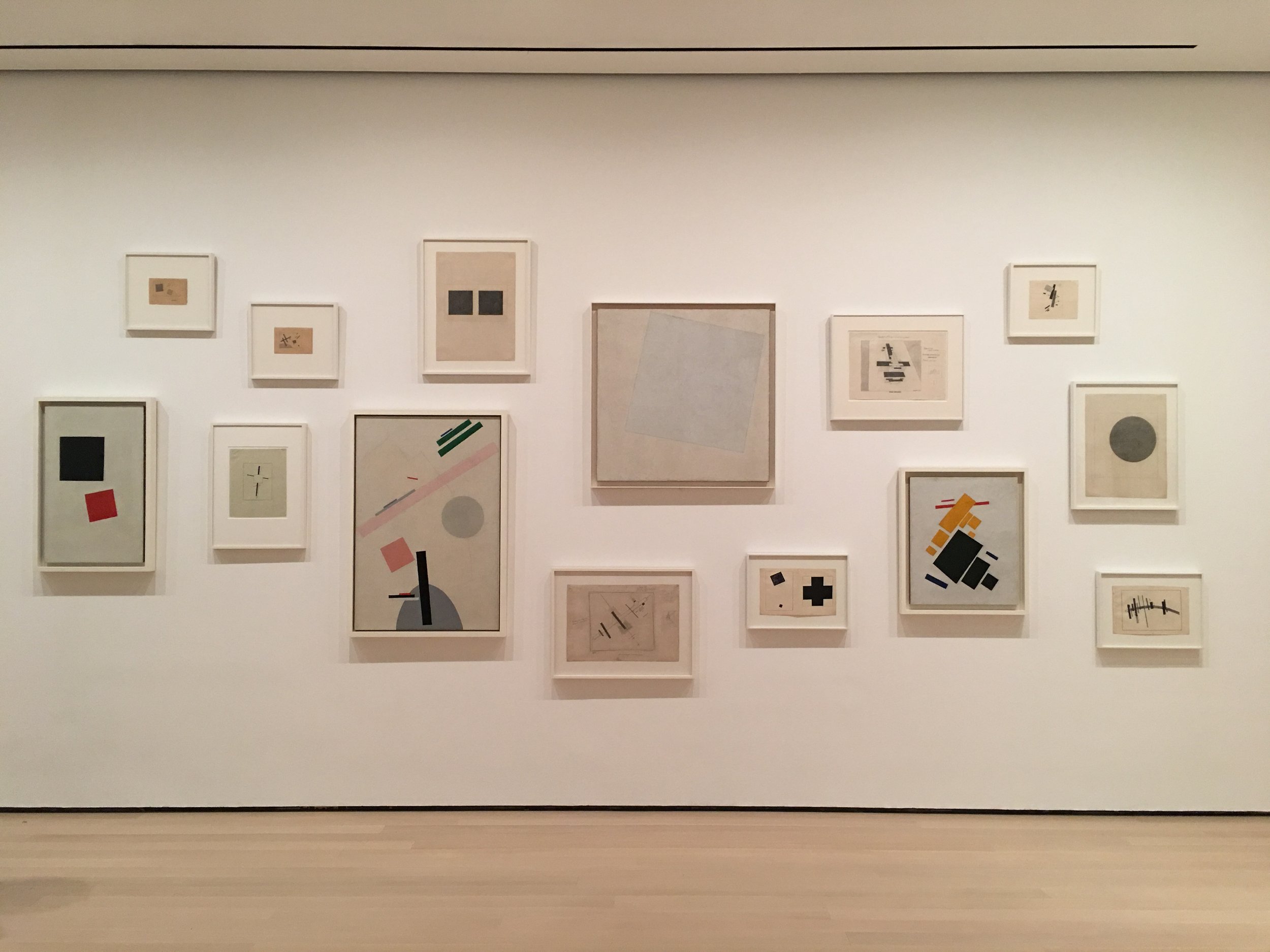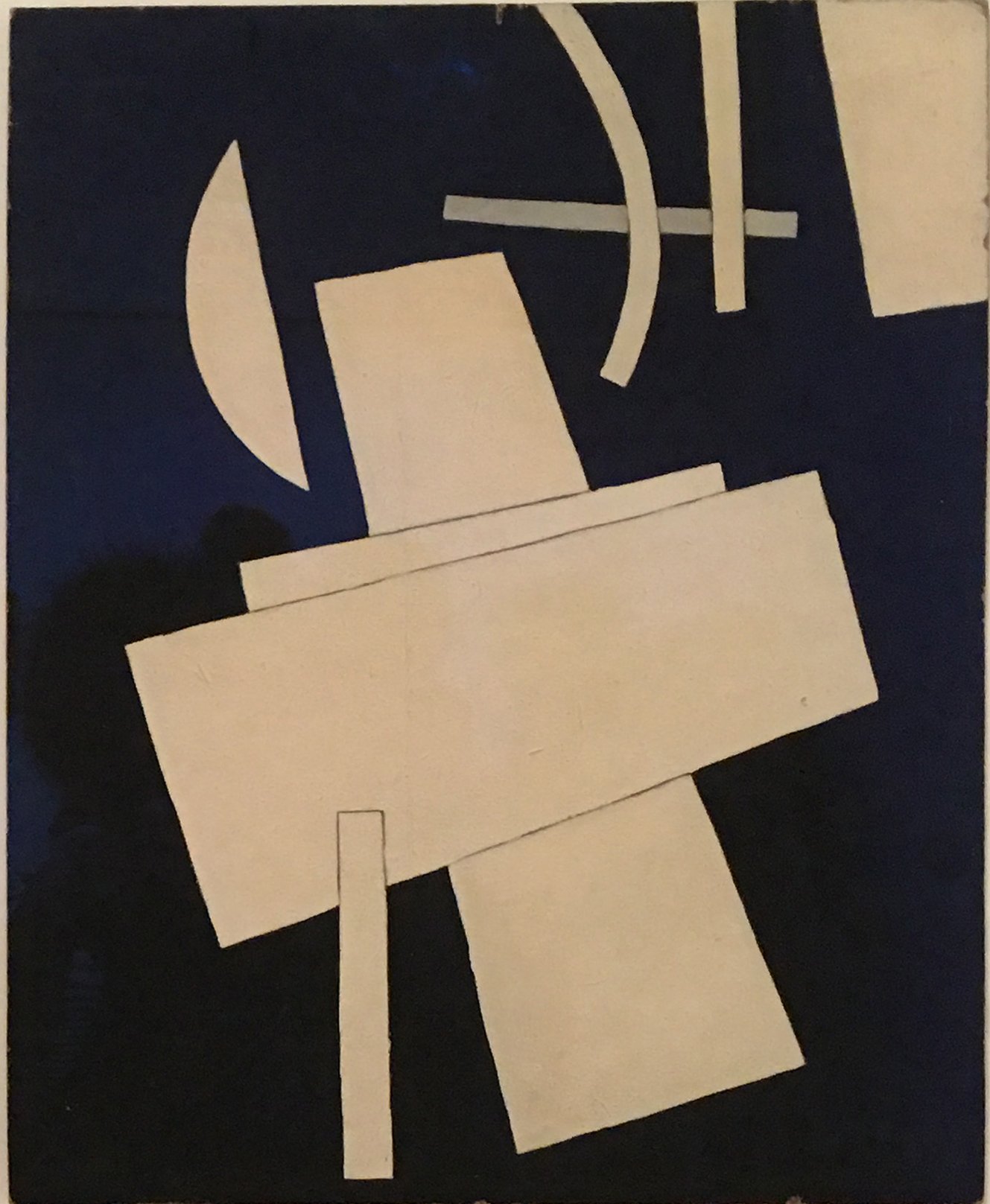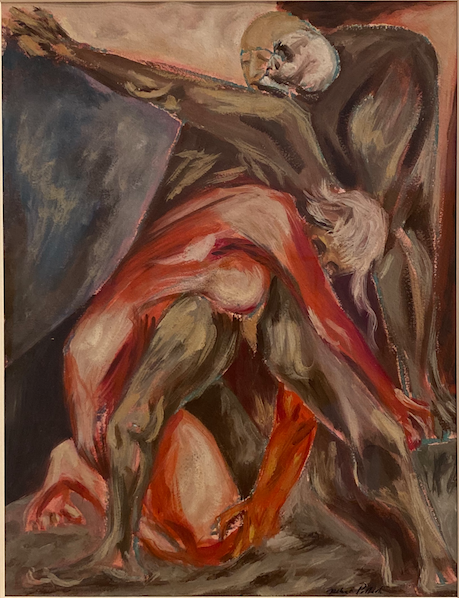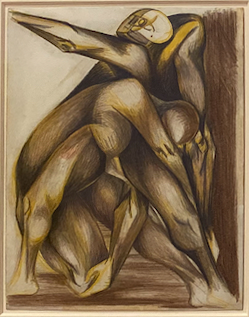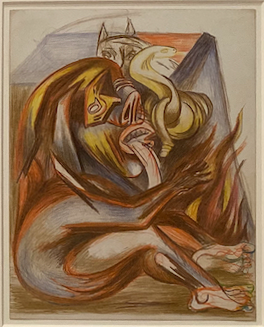What do Picasso, Malevich and Orozco have in common?
THE ROOTS OF ABSTRACT EXPRESSIONISM
The creation of a new kind of painting was part of the revolutionary urge of the Russian + Mexican avant-garde to remake their worlds in the early 1900’s. It was an abstract art that this new invention called the camera could not make. The camera with one click of a button could realistically record the world around it.
But soon these modern art movements would fall out of favor with the new ruling class of each country. Both the governments of Joseph Stalin and the new Socialists in Mexico turned their back on these abstract painter’s vision.
Joseph Stalin, who headed the USSR out of WWII by heavily defeating the German army, after the war began pushing strongly in the counter direction, crushing Russian Constructivism of the 1920’s and it’s subsequent Suprematist Art Movement to the exclusive favor of Realism.
Kazimir Malevich 1915 (left) + Lyubov Popova 1916 (right) - MoMA exhibit 2017
When Stalin pointed to the US’s lack of innovation in art as a byproduct of consumerism turning it into a cultural wasteland, the CIA was quick to pick up on this - turning Abstract Expressionism that developed in other countries as something of their own making. By the Mid-Century they set up the Propaganda Assets Inventory Division - funded by none other than our hard earned taxpayer dollars. It was a branch of psychological warfare intended to boost pro-American messaging during the long, arduous Cold War between US and the USSR.
Ironically this department had to keep what they were doing secret from the very Abstract Expressionist artists they heavily supported because many of them had their own Socialists/Communist leanings. But this art group had their suspicions and would even joke amongst themselves that maybe the CIA was where their recognition and enormous funding was coming from.
The CIA used over 800 news organizations, had offices in 35 different countries and interfaced with many art museums, in particular MoMA – short for the Museum of Modern Art - run by the Rockefellers. They and other ‘influentials’ became the propagandist front agency to act as the CIA’s buffer. They strongly promoted what became the much-lauded cultural preeminence of the United States so as not to seem behind the times. They therefore began to send their message out into the world by exhibiting travelling shows in England as well as other European cities.
This movement was concurrent with the threatening anti-Communism McCarthy era hearings as well as J. Edgar Hoover’s FBI waging a war on Communism, Afro-Americans and homosexuals – even though he himself was in the closet – never to have the audacity to come out. Both the FBI and McCarthy made hysterical denunciations of all that was avant-garde and forward thinking.
https://www.independent.co.uk/news/world/modern-art-was-cia-weapon-1578808.html
https://news.artnet.com/art-world/artcurious-cia-art-excerpt-1909623/amp-page
The art critic Georges Boudaille, a Frenchman visiting one of the exhibitions in Europe in ’59 found these American paintings to be strangely depressing and unknowable asking, “Where does this dramatic sensation of nightmare and stain come from? What do these disturbing spatters express? What?”
I’ll tell you where and what, they expressed Mexicans fighting for their lives, for their very freedom. ‘What?’ you may ask.
José Clemente Orozco Barricade 1931 (my photo w/glass reflections MoMA 2017)
The U.S. Abstract Expressionists heavily borrowed from the Mexican artists who had fought their hearts out during their 10 year battle: the Mexican Revolution. These Mexican artists were committed to using art to decry matters of social injustice and worked the power of art with their huge mural displays to inform the public of pressing political issues. To enact social freedom for the toiling worker, these canvasses and gigantic murals depict the artists’ social and political concerns.
As the Mexican Artists impact waned in Mexico due to various internal political maneuvers, these artist titans came to the United States. By then, we were in the throes of the Great Depression so these Mexican artists could provide a much needed vision of a better future for the everyday man.
U.S. bound, Los Trés Grandes, told their story of the struggle against imperialistic oppression in the face of modern American industry. They hired local art young’uns to apprentice and execute their murals: Jackson Pollock + Harold Lehman being barely out of high school.
But these US apprentices, with a couple of exceptions, seem to have lacked the emotional depth their Mexican counterparts infused into their imagery. After visiting the Whitney exhibit “Vida Americana” in 2020, it became clear to me that Pollock’s early paintings, even before his drip paintings, have a tepid quality (images on upper left) and lack the overall passion oozing from Siqueiros’, Rivera’s and Orosco - Los Trés Grandes - paintings and murals.
For the Mexican artists, theirs was a story of human struggle to overcome authoritarian, capitalist rule. They couldn’t help but paint everyday people passionately involved in their struggle.


